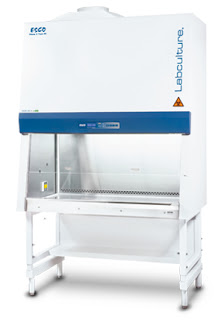 |
| Air flow profile of a cGMP depyrogenation oven Courtesy Lytzen A/S |
Pyrogens are substances that produce a temperature rise, or fever. They are generally described as endotoxins or exotoxins associated with bacteria. The subject of pyrogens, their nature and source, is well beyond the scope of this article. The focus here is on how to rid them from pharmaceuticals, specifically the containers in which they may be shipped, stored, or handled.
The sterile and pryogen free bulk parenteral final product needs to be dispensed into appropriate containers for shipping, storage, then handling, right up to point where it is administered to the subject. The containers must be pyrogen free, just like the product, in order to avoid any contamination. One way to accomplish this is with a heating process that assures destruction of pyrogens while protecting the processed items from other sources of contamination.
Of course, only items that can tolerate the necessary processing temperatures without destruction can be heat processed. The majority of dry heat processed items will likely be glass containers. A typical depyrogenation oven cycle might look like this:
- Drying - Air circulation and possibly some heat, along with introduction of fresh air through a filter, to assure that the load is fully dry.
- Load Heating - Once conditions have been achieved that indicate the load is fully dry, heat is applied to raise the chamber temperature to the required processing temperature.
- Load Exposure or Soaking - The load within the chamber must attain a minimum temperature for a minimum amount of time to assure the minimum pyrogen level reduction is achieved.
- Load Cooling - After the required exposure has been achieved, the load mass will have a substantial amount of stored heat. The removal of this heat can be achieved with filtered ventilation air or a water coil integral to the oven.
The basics are simple, but each production operation will face specific challenges related to their product, facility, and operation. Intricacies of oven air movement, load handling, filtration, sealing, process validation, and many other aspects will come into play in establishing a depryogenation process that fulfills the entire range of regulatory and organization requirements.
Share your biopharm processing challenges with knowledgeable professionals. The combination of your own process knowledge and experience with their product application expertise will yield an effective solution.


